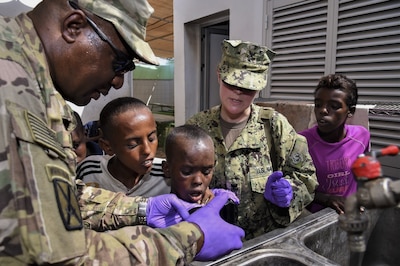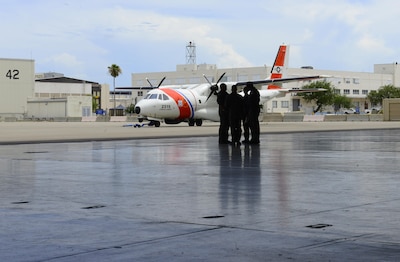By Army Staff Sgt. Ange Desinor, 3rd Armored Brigade Combat
Team, 4th Infantry Division
GRAFENWOEHR TRAINING AREA, Germany, Aug. 28, 2017 — Soldiers
of the 3rd Armored Brigade Combat Team, 4th Infantry Division, closed out their
final major exercise in Europe with a bang during the Combined Resolve IX
live-fire exercise held here Aug. 19-24.
The exercise, involving about 2,000 soldiers from five of
the “Iron Brigade’s” seven battalions and the 10th Combat Aviation Brigade,
enhanced the readiness of U.S. Army Europe’s regionally allocated land and
aviation forces to deter aggression in Europe while serving in support of
Operation Atlantic Resolve.
“Combined Resolve IX is a brigade-level combined arms
live-fire coordination exercise,” said Army Maj. Michael Harrison, 3rd ABCT,
4th Infantry Division, operations officer. “It’s a culminating event for our
readiness progression as well as the deployment. This strengthens our readiness
and ability to fight as a brigade.”
Synchronzied Capabilities
The brigade synchronized capabilities in a defensive
scenario that emphasized speed while maneuvering to dominant battle positions
against a conventional adversary.
Tanks and mechanized infantry took up the frontline fight as
artillery, combat engineers, close-air support and unmanned aerial
reconnaissance shaped conditions before and during the fight.
“This was a chance for us to challenge ourselves and see how
we operate, how we fight, and how we function as a brigade-level organization,”
Harrison said.
Combined Resolve IX was the sixth brigade-level combined
arms live-fire coordination exercise for 3rd ABCT in the last 13 months.
Four of those exercises occurred during the brigade’s
nine-month Atlantic Resolve rotation, including two opportunities to serve as a
multinational task force during U.S. Army Europe exercises Combined Resolve
VIII at Hohenfels Training Area, Germany, and Getica Saber at Cincu, Romania.
“We are very well trained,” Harrison said. “When we go back
to Fort Carson, Colorado, our level of readiness will be extremely high,
especially when we transition back to our own training area.”
Army Sgt. Maj. Joseph Nicholson, the operations sergeant major
for 3rd ABCT, 4th Infantry Division, said a key for the brigade is carrying
forward the knowledge gained during the latest exercise and the cumulative
bilateral and multinational training that’s occurred with NATO allies and
partners since the brigade arrived in Europe in January.
“Our goal moving forward is to maintain our current state of
readiness. We need to ensure that everything we have learned here is not lost.
It must be captured and continued to be exercised and improved upon,” Nicholson
said.
Air Assault Training
During Combined Resolve IX, an emphasis by the brigade was
imposing its lethality on an opponent early and often. This included an air
assault to move scouts and infantrymen to forward positions and an artillery
raid designed to steer the notional enemy onto ground favorable to the Iron
Brigade.
“The artillery raid was an interesting thing to do because
some soldiers have never done it for and actual mission. Throughout this entire
Atlantic Resolve rotation, we have really emphasized agility and innovative
approaches to engaging a near-peer threat, if we ever needed to,” Harrison
said.
This final validation exercise also allowed USAREUR’s
rotational armored brigade to team up with its rotational helicopter assets
from the 10th CAB, out of Fort Drum, New York. During the main fight, AH-64
Apache attack helicopters addressed targets overhead as M1A2 tanks from 1st
Battalion, 68th Armor Regiment, pushed to encounter their own targets.
Additionally, infantrymen from 1st Battalion, 8th Infantry
Regiment, who normally serve in a mechanized role in Bradley Fighting Vehicles,
were excited to jump in UH-60 Black Hawk and a CH-47 Chinook helicopter during
an air assault with the 3rd General Support Aviation Battalion, 10th CAB.
“It’s not often that we get to do an air assault mission,”
said Army 1st Lt. Brandon Castinado, a platoon leader with Company A, 1st Bn.,
8th Infantry Regiment “It’s a great experience to see the brigade use all of
our assets in various ways to defeat an enemy. This shows that we are capable
of completing missions that are thought to be difficult or impossible to
achieve. We did it, and we beat the odds. We are adaptable, resilient and most
importantly, well-trained.”








